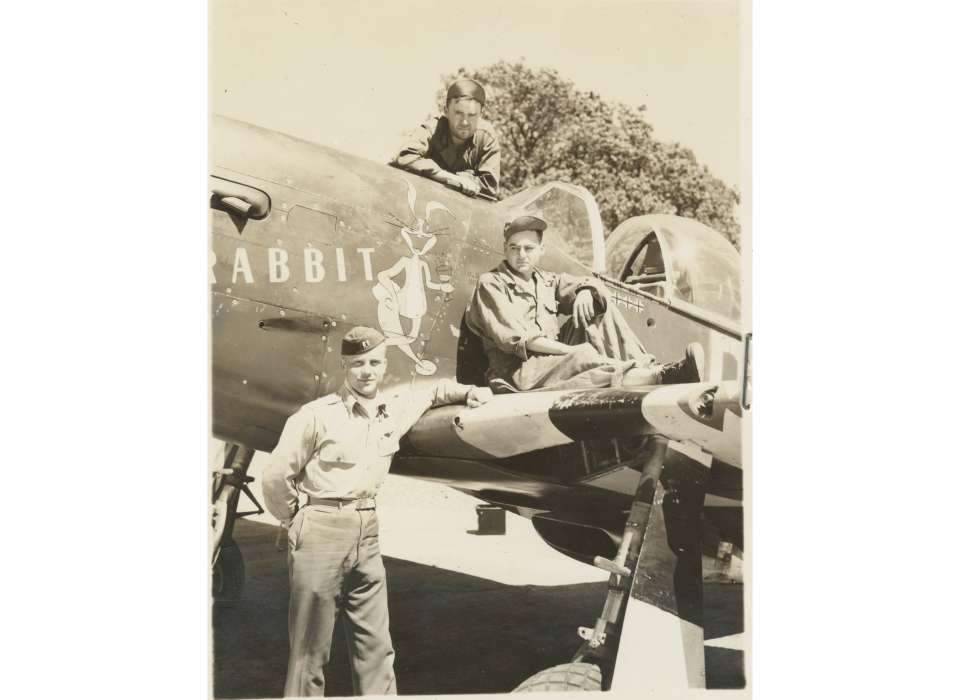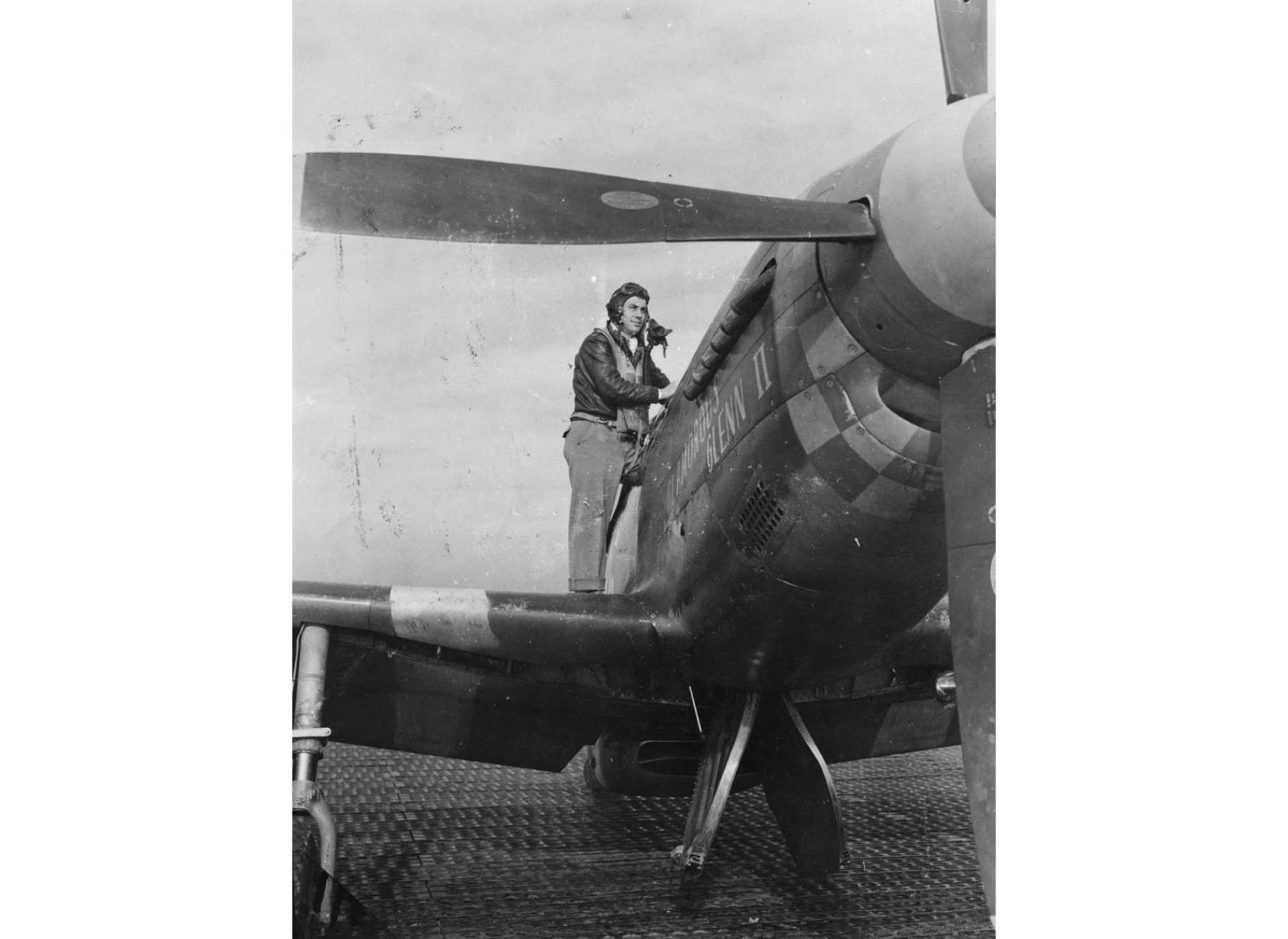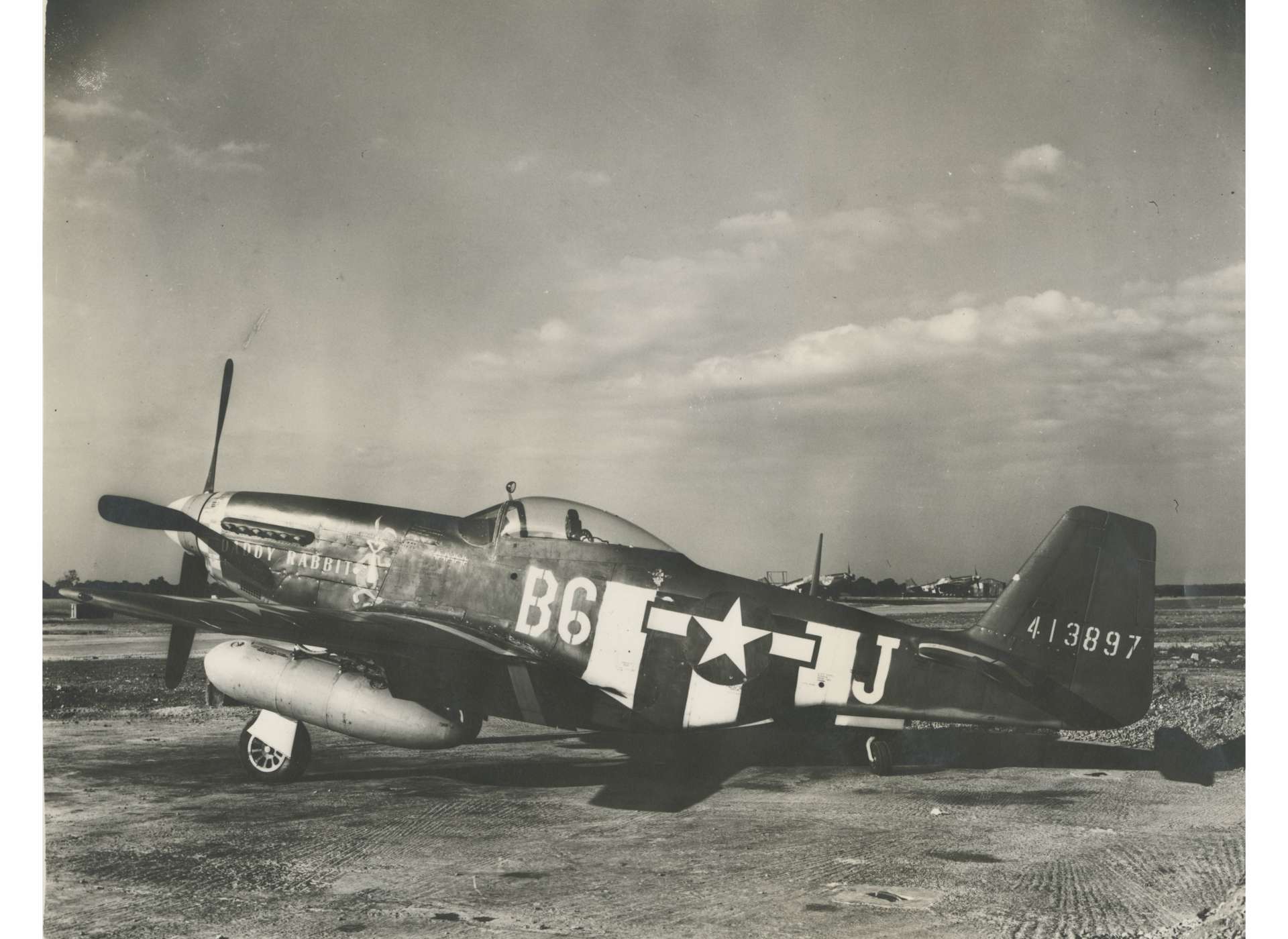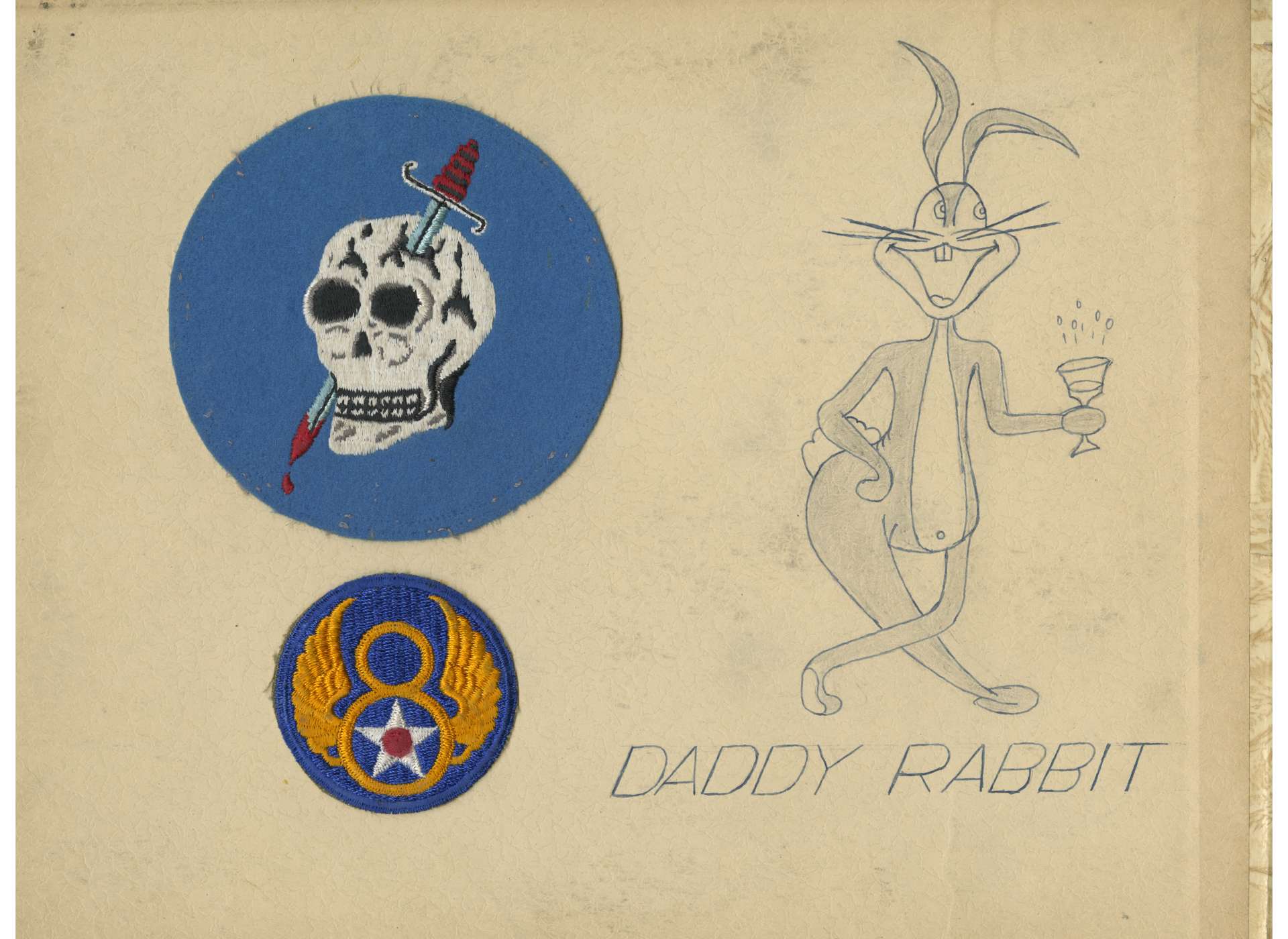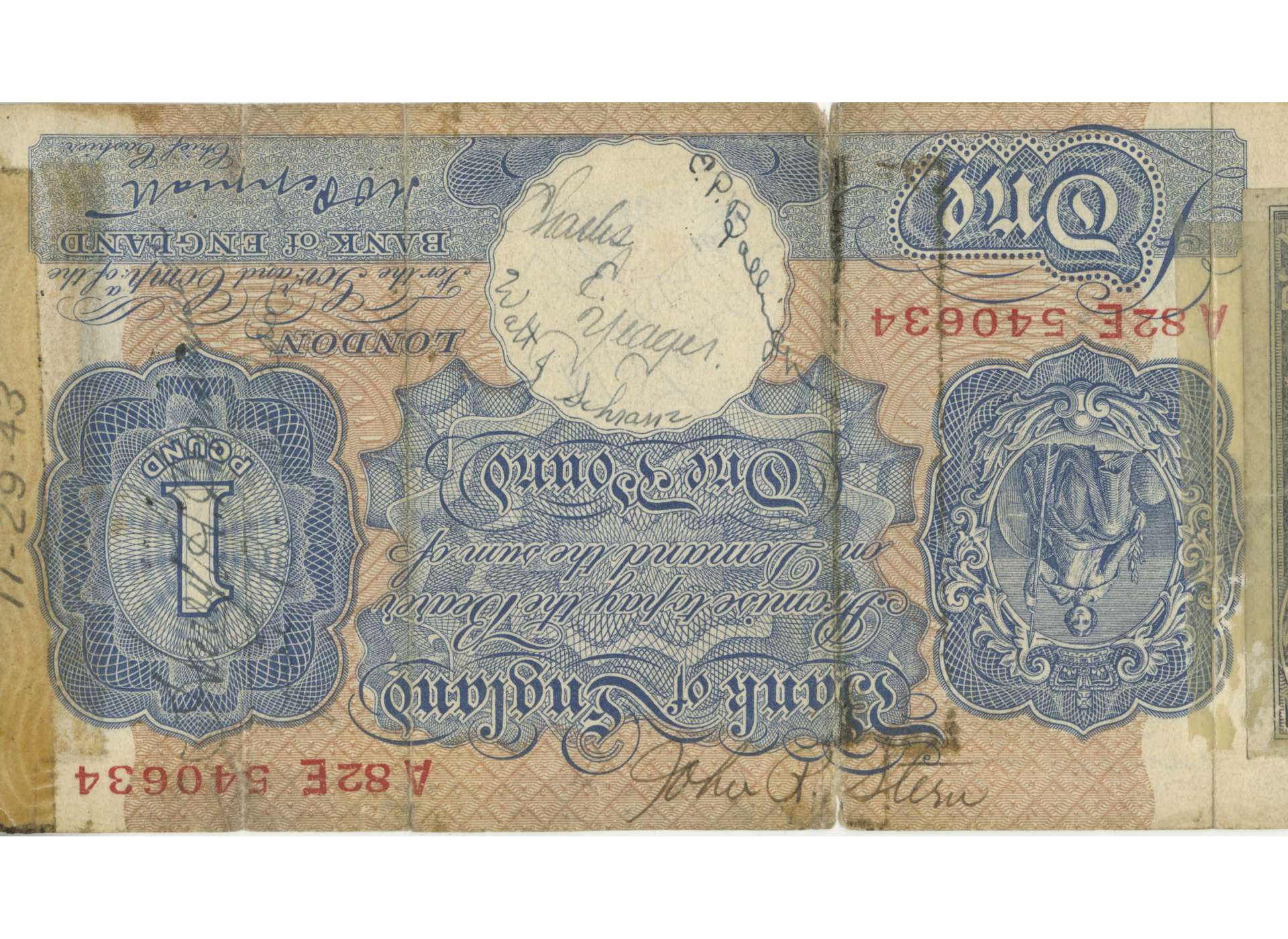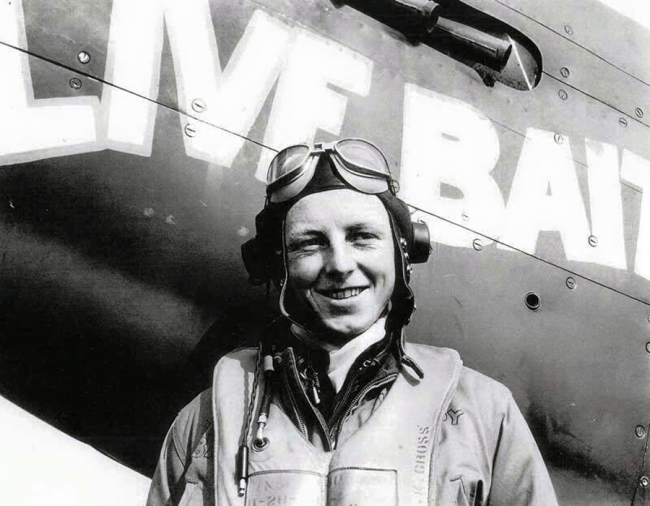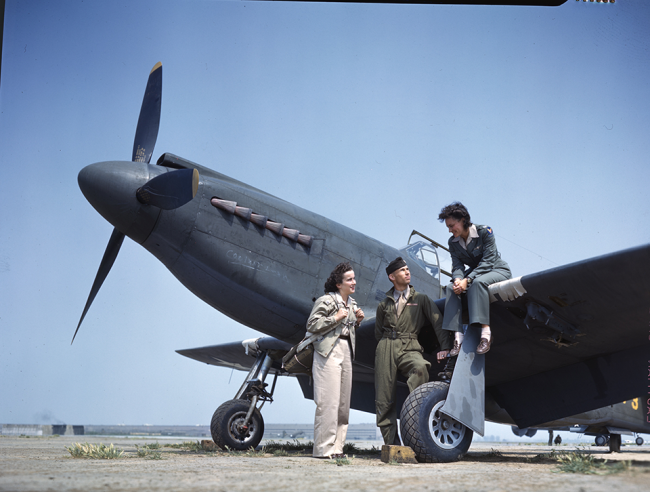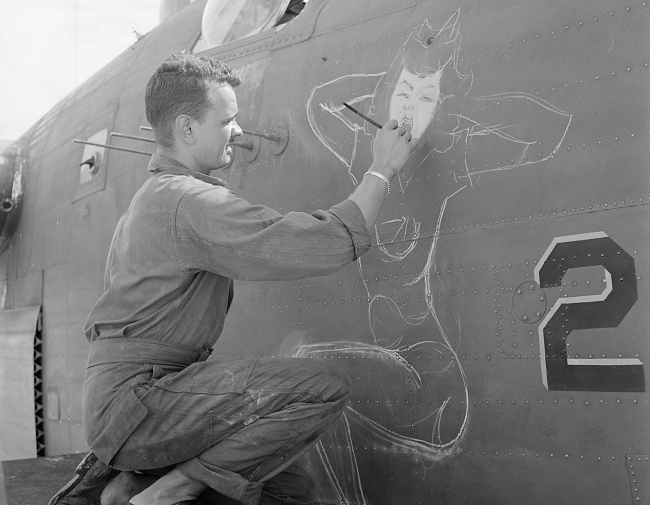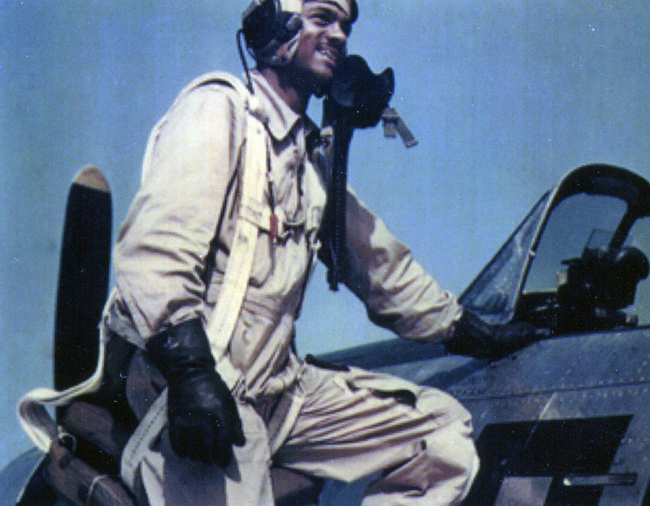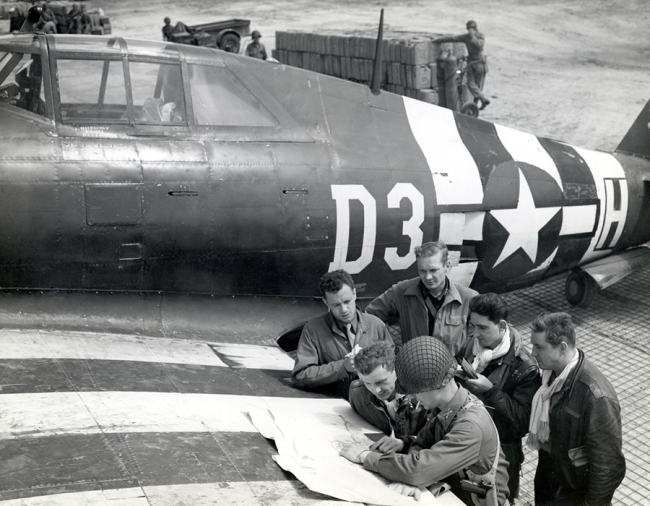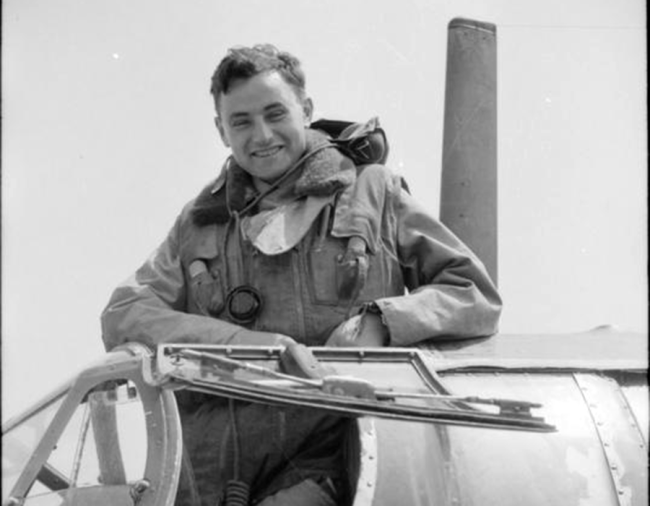Top Image: Pictured left to right are Captain Charles K. Peters, pilot of Daddy Rabbit, crew chief Staff Sergeant John E Kunelius, and Assistant Crew Chief Sergeant Jasper B. Day.
Recently, I met with the daughter of a WWII veteran who was interested in donating some items collected during the war by her father, Lieutenant Colonel Charles K. Peters. Peters put together an impressive photo album of his days as a fighter pilot in Europe and managed to pass down to his family a well-preserved flight helmet, gloves, and foreign currency signed by his squadron mates. After one look at the items, I was very happy to accept the collection on the Museum’s behalf.
In the summer of 1944, Captain Charles K. Peters was flying Bureau # 44-13897, one of the hot, new P-51D model Mustang Fighters. The “D” carried two additional .50 caliber machine guns in the wings, was slightly faster, and the bubble canopy gave Peters a much greater field of visibility than earlier Mustang generations. Painted on the engine cowling was Peters’s nickname, “Daddy Rabbit,” a playful jab given to him from squadron mates in regards to his premature balding and the Warner Bros. cartoon character Bugs Bunny. For pilots of the 363rd Fighter Squadron still flying the early model Mustangs, Peters’s mount was highly coveted.
As the end of Peters’s combat tour drew near, a pilot in his flight, also named Charles, asked him if he could have Daddy Rabbit after his final mission. Peters agreed. Charles was an aggressive pilot, and Peters knew he wanted his airplane so badly that he would do anything to keep his future bird from getting shot full of holes.
Peters’s last sortie was a bomber escort mission into Germany. He was flight leader, and Charles was on his wing. As the formation crossed into Germany, the lumbering B-24s were bounced by enemy fighters. That was the cue for Peters and the boys of the 363rd to punch that time clock and go to work.
Standard operating procedure called for jettisoning the drop tanks slung under the wings before dog fighting. Just as he had dozens of times before, Peters jerked the release cable to dump the tanks, except this time, Daddy Rabbit’s engine quit. Peters fell out of formation like a brick. He was baffled as he frantically checked gauges and switches with no response.
-

1st Lieutenant Charles E. Yeager with Glamorous Glenn II (Image: American Air Museum in Britain)
-

Captain Charles K. Peters's P-51D, the Daddy Rabbit, and Lieutenant Charles Yeager's future aircraft, the Glamorous Glenn II.
-

A page from Captain Charles K. Peters's scrapbook. Peters's 363rd Fighter Squadron and 8th Air Force patch are pasted inside, along with a sketch of Daddy Rabbit's nose art.
-

An English pound note with signatures of squadron members that was carried by Captain Charles K. Peters. Lieutenant Charles Yeager's signature is featured prominently in the middle.
The needle on the altimeter gauge was spinning at an alarming rate when he heard Charles’s familiar voice over the radio. Peters looked out over his wing to see Charles right there with him. Peters told him he was thinking about bailing out, to which Charles objected to, doing his best to convince Peters to stay with the plummeting aircraft. He informed Peters that he was going to fly Daddy Rabbit on the following day’s mission, telling him, “Let’s figure this out.”
Under 5,000 feet, with flak bursting and tracer fire streaking all around them, Charles told Peters to check his mixture control. He told him to set it to “emergency rich” to see what would happen. Peters adjusted his mixture control and Daddy Rabbit’s engine roared back to life. Peters and Charles recovered from the dive and began the climb back up to the bomber formation, both of them sweating profusely after the close call. Peters realized he bumped the mixture control knob with his elbow when he pulled the release cable for the drop tanks.
The next morning on the flight line, Daddy Rabbit and the Bugs Bunny nose art on Bureau # 44-13897’s had been covered over by a thick layer of olive drab paint. A new name adorned the cowling, and Lieutenant Charles “Chuck” Yeager climbed into Glamorous Glenn II for the first time. Yeager named the aircraft after his girlfriend, Glennis Faye Dickhouse, and scored five aerial victories in one day on October 12, 1944. After the war, Yeager became a national celebrity by breaking the sound barrier in the Bell X-1. Yeager again honored Glennis, who by then was his wife, by christening the X-1 as Glamorous Glennis.
After completing his tour of combat duty and scoring four aerial victories in Daddy Rabbit, Peters remained in the service and was a founding member of one of the first operational jet fighter squadrons. He retired from the US Air Force at the rank of Lieutenant Colonel in the 1960s.
Just a week after Yeager made “ace in a day,” Bureau # 44-13897 was lost in bad weather with Lieutenant Horace M. Roycroft behind the controls. Roycroft wasn’t so lucky as Peters or Yeager, and was killed in the crash. Had Bureau # 44-13897 survived the war, it would undoubtedly be in the National Museum of the US Air Force or quite possibly the Smithsonian. The National WWII Museum is very pleased to have a portion of the flight gear used by Lt. Col. Peters during his WWII service in its collection.
Larry Decuers
Larry Decuers is a former Curator at The National WWII Museum and veteran of the US Army's 101st Airborne Division.
Cite this article:
MLA Citation:
APA Citation:
Chicago Style Citation:
